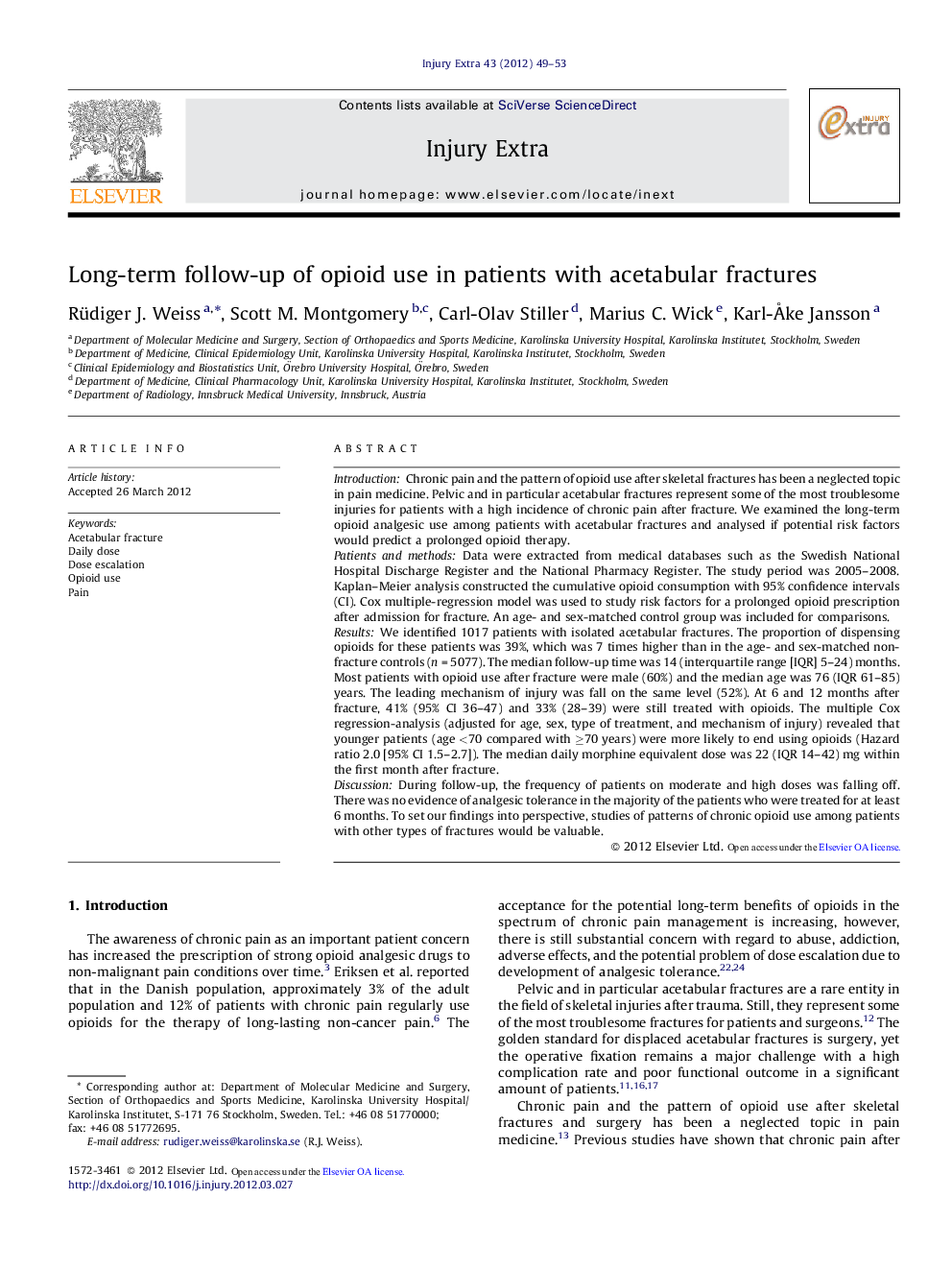| کد مقاله | کد نشریه | سال انتشار | مقاله انگلیسی | نسخه تمام متن |
|---|---|---|---|---|
| 3243489 | 1206468 | 2012 | 5 صفحه PDF | دانلود رایگان |

IntroductionChronic pain and the pattern of opioid use after skeletal fractures has been a neglected topic in pain medicine. Pelvic and in particular acetabular fractures represent some of the most troublesome injuries for patients with a high incidence of chronic pain after fracture. We examined the long-term opioid analgesic use among patients with acetabular fractures and analysed if potential risk factors would predict a prolonged opioid therapy.Patients and methodsData were extracted from medical databases such as the Swedish National Hospital Discharge Register and the National Pharmacy Register. The study period was 2005–2008. Kaplan–Meier analysis constructed the cumulative opioid consumption with 95% confidence intervals (CI). Cox multiple-regression model was used to study risk factors for a prolonged opioid prescription after admission for fracture. An age- and sex-matched control group was included for comparisons.ResultsWe identified 1017 patients with isolated acetabular fractures. The proportion of dispensing opioids for these patients was 39%, which was 7 times higher than in the age- and sex-matched non-fracture controls (n = 5077). The median follow-up time was 14 (interquartile range [IQR] 5–24) months. Most patients with opioid use after fracture were male (60%) and the median age was 76 (IQR 61–85) years. The leading mechanism of injury was fall on the same level (52%). At 6 and 12 months after fracture, 41% (95% CI 36–47) and 33% (28–39) were still treated with opioids. The multiple Cox regression-analysis (adjusted for age, sex, type of treatment, and mechanism of injury) revealed that younger patients (age <70 compared with ≥70 years) were more likely to end using opioids (Hazard ratio 2.0 [95% CI 1.5–2.7]). The median daily morphine equivalent dose was 22 (IQR 14–42) mg within the first month after fracture.DiscussionDuring follow-up, the frequency of patients on moderate and high doses was falling off. There was no evidence of analgesic tolerance in the majority of the patients who were treated for at least 6 months. To set our findings into perspective, studies of patterns of chronic opioid use among patients with other types of fractures would be valuable.
Journal: Injury Extra - Volume 43, Issue 7, July 2012, Pages 49–53